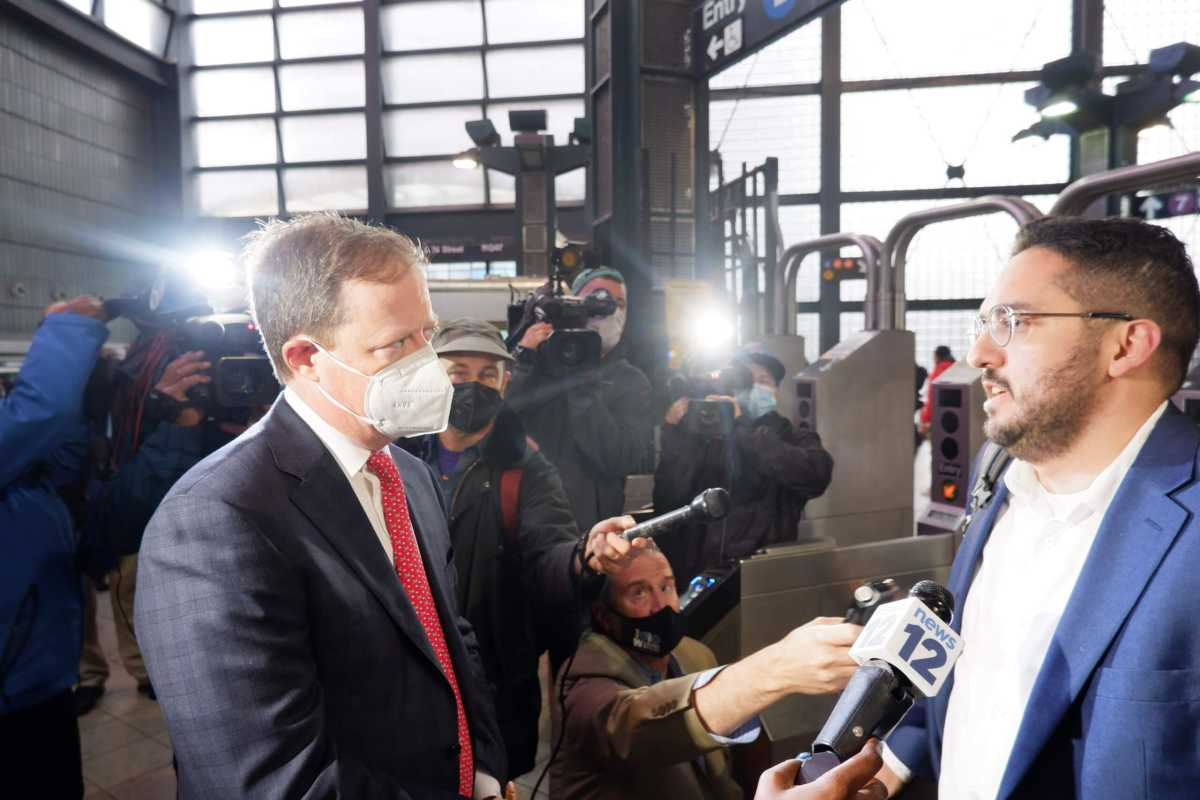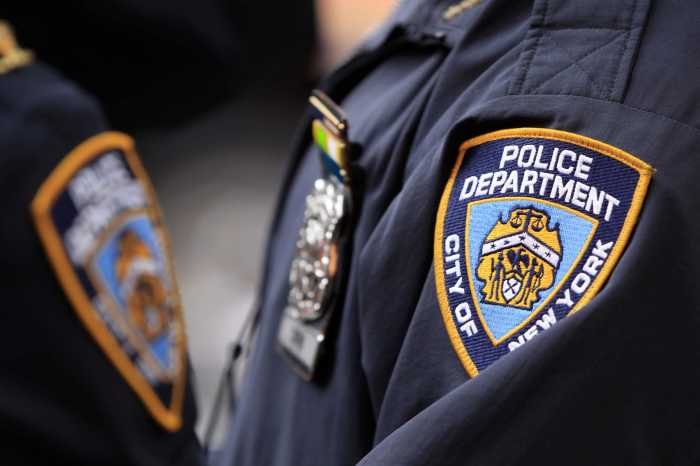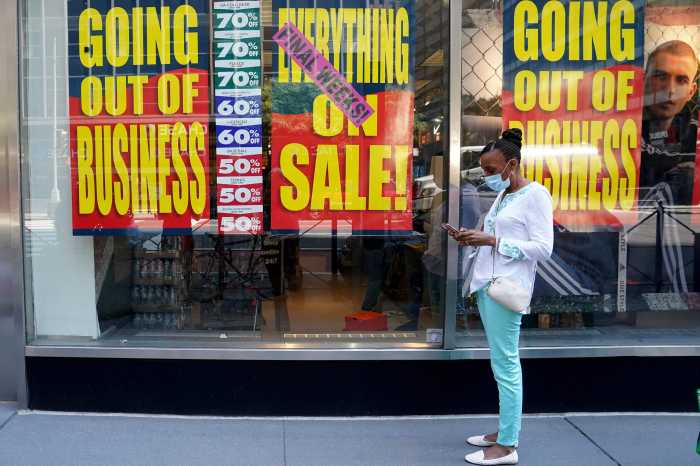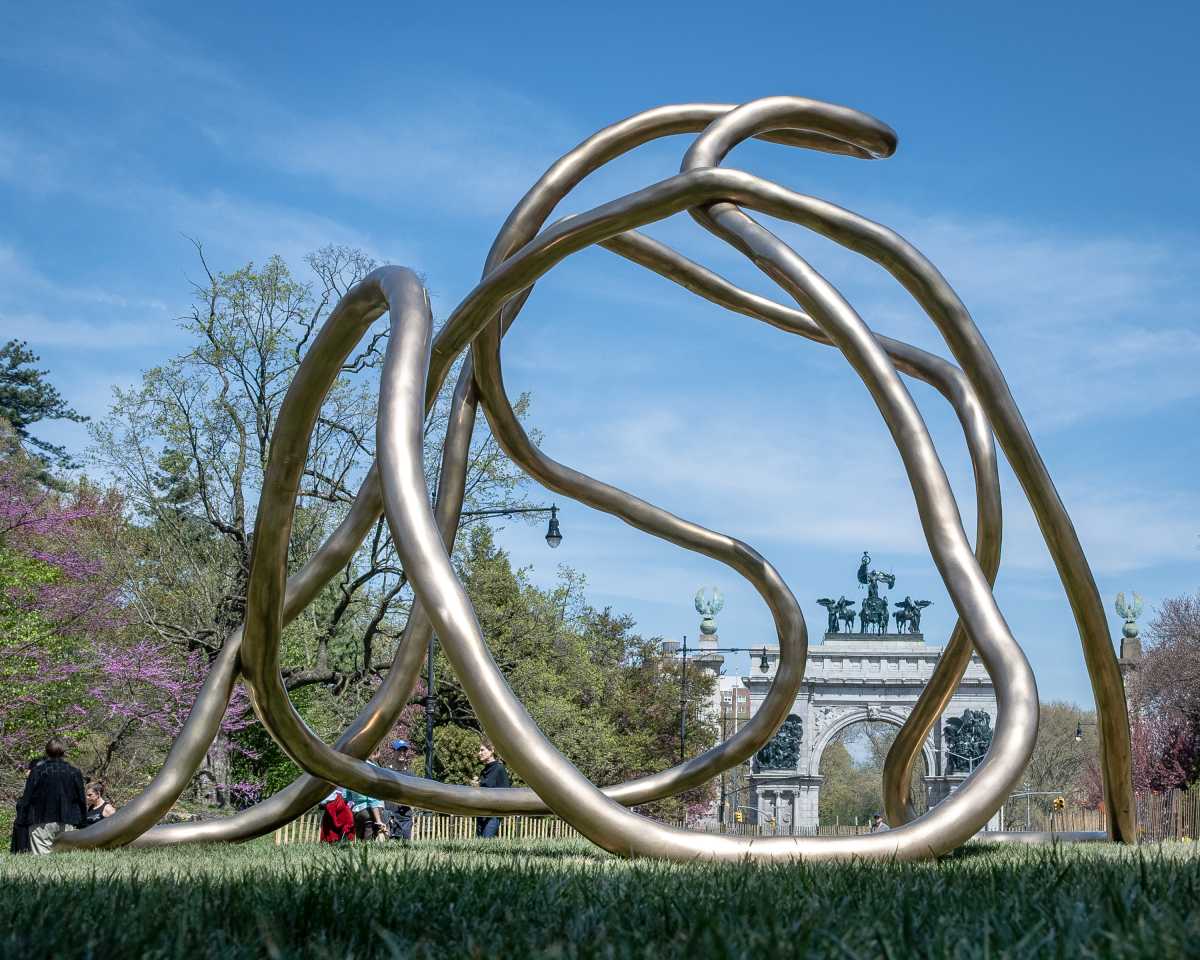New York City Transit President Richard Davey wants to hear from Big Apple commuters every month to help the MTA figure out how to bring back more riders to its subways and buses.
“For the first time in the history of the agency, NYCT will undertake a monthly customer satisfaction survey to keep a ‘pulse’ on our customers while continuing our deeper, bi-annual customer survey,” wrote Davey in Metropolitan Transportation Authority board documents published Friday ahead of its monthly meetings this week.
“The combination of direct customer feedback and operational performance data is a goldmine of insight that allows for increased satisfaction and in our case particularly attracting more riders back onto our subways, buses and paratransit vehicles,” the transit honcho added. “Our goal is to make NYCT the best, most reliable way to get around NYC.”
Davey in May took over the helm of NYC Transit, the MTA subsidiary in charge of the subways, buses, Staten Island Railway, and Access-A-Ride.
According to the results from the agency’s most recent questionnaire in June, subway riders were more worried about people with mental health issues in the system and safety, while bus commuters mostly wanted better service.
When asked what would encourage straphangers to take more subway trips, the top response was “fewer people behaving erratically,” followed by a “more visible police and security presence,” and “shorter wait times on weekends.”
On the buses, the highest-ranking concerns were all about speeding up commutes, with “shorter wait times on weekdays” topping the list. That issue only came in at number five for those traveling on the rails.
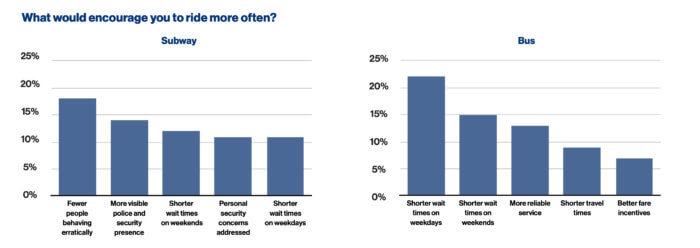
The survey also asked riders how satisfied they were with service overall, as well as more specifics like cleanliness, announcements, wait times, and staff helpfulness.
As the COVID-19 pandemic continues to rage on with new variants like BA. 5, New Yorkers are returning to mass transit at lower rates than the MTA previously expected, threatening the agency’s bottom line.
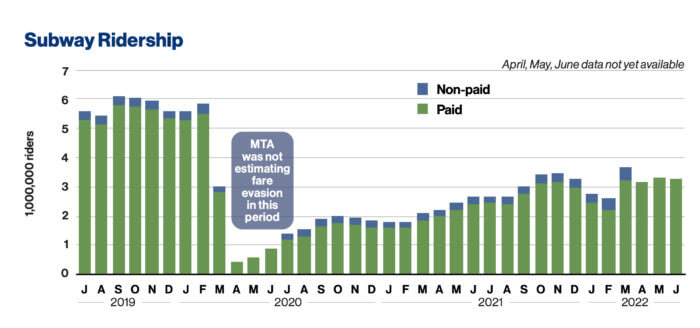
White-collar workers are largely continuing to work remotely or with hybrid schedules, and office occupancy rates for the city were still at only 41% last month.
“There are many factors affecting ridership that fall outside the direct control of NYCT to change, most notably, the popularity of remote work policies,” Davey wrote. “Although NYCT ridership recovery trends above the North American average, it is below that of our international peers.”
NYC Transit got 53% of its operating budget from fare revenues pre-pandemic, but so far this year has only earned 32% through ticket sales, below the 40% the agency budgeted, a recent audit by State Comptroller Tom DiNapoli found.
MTA budget gurus have warned that they will have to cut service once federal COVID relief aid dries up in the coming years, unless Governor Kathy Hochul — who controls the MTA — and state lawmakers earmark new transit funding.
MTA leaders will give an updated financial picture and present its proposed budget for 2023 to its board this week.
One transit advocate said the MTA and state and city leaders have focused too much on policing and low-level crime in the subways, rather than what the agency has direct control over, funding more and better service.
“Constantly talking about police instead of how we improve subway service is passing the buck for the quality of subway service,” said Danny Pearlstein of Riders Alliance. “It’s not a glowing advertisement for the system, as opposed to saying, ‘Here’s what we’re doing now to make the commute better.'”



